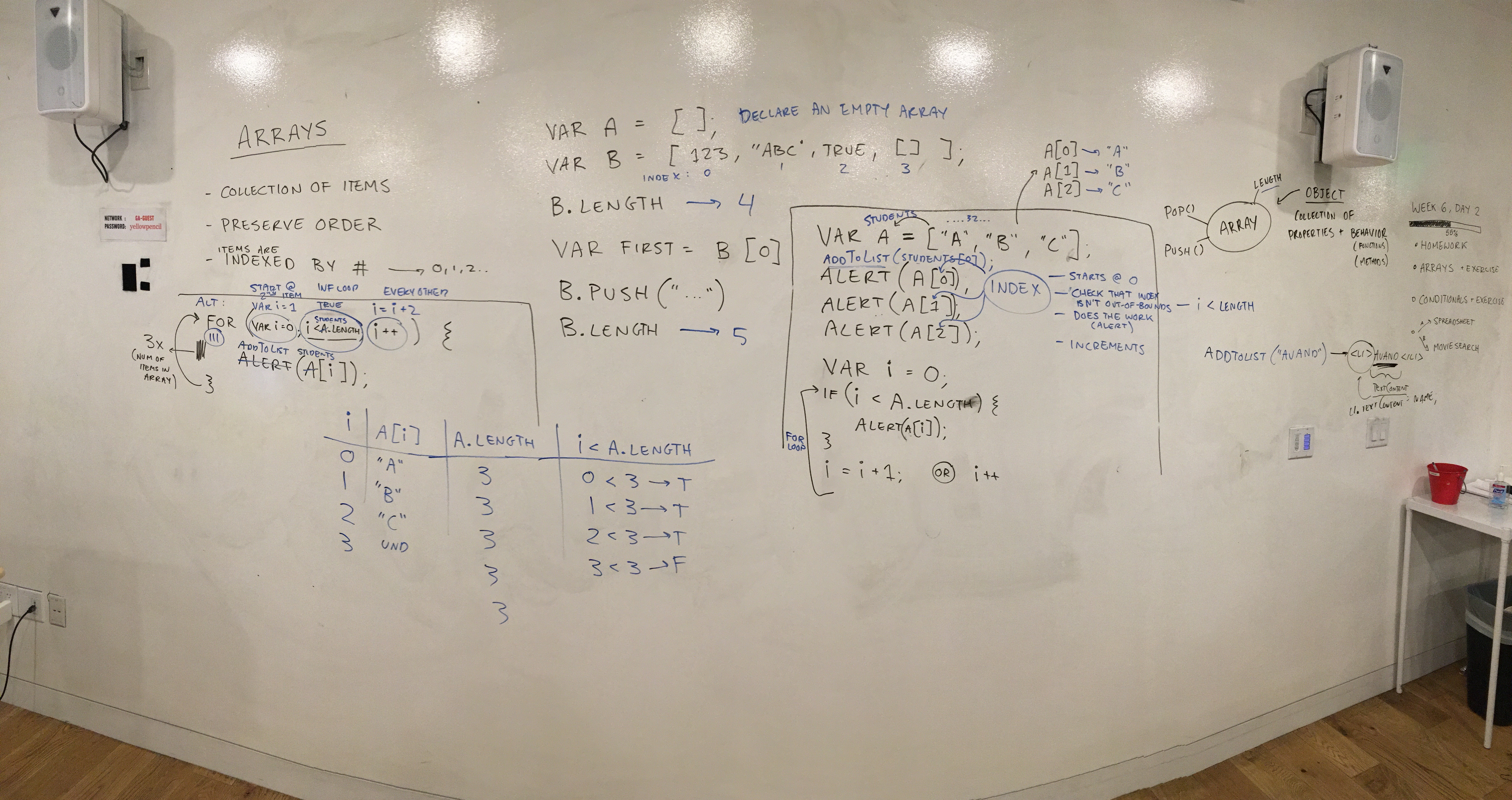
// If the element is already on the page:
var el = document.querySelector("img");
el.setAttribute("src", "http://example.com/logo.png");
// If the element is NOT on the page (new el):
var el = document.createElement("img");
el.setAttribute("src", "http://example.com/logo.png");
// If the element is already on the page:
var el = document.querySelector("p");
el.textContent = "The quick brown fox...";
// If the element is NOT on the page (new el):
var el = document.createElement("p");
el.textContent = "The quick brown fox...";
Here's the first attempt:
var el = document.createElement("li");
el.textContent = "Go grocery shopping...";
var parentEl = document.querySelector("ul");
parentEl.appendChild(el);
Notice how there are a bunch of hard-coded values? Let's move those out into variables:
var name = "li";
var text = "Go grocery shopping...";
var parent = "ul";
var el = document.createElement(name);
el.textContent = text;
var parentEl = document.querySelector(parent);
parentEl.appendChild(el);
Now we have a pretty good candidate for a function:
function addElement(name, parent, text) {
var el = document.createElement(name);
el.textContent = text;
var parentEl = document.querySelector(parent);
parentEl.appendChild(el);
}
addElement("li", "ul", "Go grocery shopping...");
In that last example, you could imagine now putting that
function in a helpers.js file and reference
it from any program:
<script src="helpers.js"></script>
In javascript, when we want to store a list of things, we use an object called Array. Arrays can be created in javascript using square braces ([) like so: ['Avand', 'Rob', 'Sandi']
Like the other javascript objects we've looked at so far, Arrays have properties and methods that you'll probably find useful:
In javascript, when we want to execute some code some number of times, we use a for loop. for loops are particularly helpful for doing something with each item in an array.
For example, the following code will add a list item to a list for each item in the array instructors:
var instructors = ['Avand', 'Rob', 'Sandi'];
var list = document.querySelector('ul');
var item;
for (var i = 0; i < instructors.length; i++) {
item = document.createElement('li');
item.textContent = instructors[i];
list.appendChild(item);
}Conditionals are how we branch our code based on some condition in programming languages.
Often times, the condition in a conditional is based on a comparison of some values. In javascript, we use the following operators to compare values:
== (or ===): equal to!= (or !==): not equal to>: greater than>=: greater than or equal to<: less than<=: less than or equal toConditionals are simply blocks of code wrapped in some condition statement. If this statement is true, then the code executes, otherwise it does not. They also provide a way to include alternative logic in an else block. In javascript, they look something like this:
var a = 1;
var b = 2;
if (a === b) {
// this will NOT execute...:
alert('how could this be!?!?!');
} else {
// ...but this will execute:
alert('naturally...');
}Comparisons return booleans. We can combine booleans using the && (and) and || (or) operators. The following tables show how these operators will combine different boolean values:
&& (and) |
true | false |
|---|---|---|
| true | returns true |
returns false |
| false | returns false |
returns false |
|| (or) |
true | false |
|---|---|---|
| true | returns true |
returns true |
| false | returns true |
returns false |